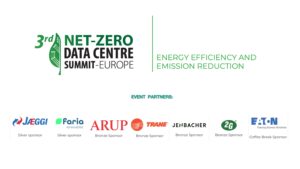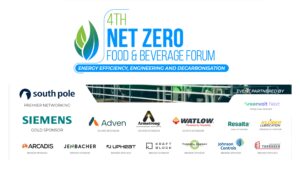Data centers use massive amounts of power, and lighting systems are a big chunk of operating expenses as well as part of the environmental impact. With greater pressures towards sustainability for businesses overall, new technologies in the form of lighting equipment are being developed. This can greatly diminish energy use with enhanced efficiency as well as improve workers’ health. Effective lighting is a foundation, but too often a starved element of end-to-end data center green initiatives that can make a difference to carbon reduction programs. This article examines the new trends in sustainable lighting systems in data centers. It evaluates energy-efficient technologies, intelligent management systems, and design factors. These are revolutionizing the way these business-critical buildings are lit.
Sustainable Lighting in Data Centers: Energy-Efficient Technologies
The key to sustainable lighting systems is choosing the correct technology. Modern options offer more efficient, longer-lasting, and capable solutions than traditional ones. Let us discuss the core technologies that are revolutionizing data center lighting:
LED Solutions for data centers
LED lighting provides up to 80% energy savings compared to conventional fluorescent installations. This is with no compromise in performance and lifespans of more than 50,000 hours. In the data center, this means reduced maintenance and reduced interference with mission-critical operations. Furthermore, LED lighting of high quality can be calibrated for both colour temperature and light levels appropriate for various zones. This is from server aisles needing high legibility to monitoring consoles where glare protection is of extreme importance. Moreover, the initial higher cost of LEDs will generally have ROI in 2-3 years in energy conservation and saved replacement costs.
Human-Centric Lighting Applications
Human-centric lighting is synchronized to natural circadian rhythms. It benefits technical personnel working long hours in these conditions. Such systems dynamically adapt color temperature throughout the day, offering cooler, bluish light during daytime shifts and warmer tones during nighttime and evening shifts. Furthermore, this method is reported to enhance alertness, minimize errors, and enhance general well-being for data center employees. The technology exists alongside automation systems, generating environments that satisfy human performance and energy efficiency requirements without sacrificing on either front.
Emerging Technologies: OLEDs and Beyond
Organic LEDs (OLEDs) and other innovative technologies are now starting to infuse specialized data center environments. These extremely thin, flexible sources of light can be integrated into architectural features and equipment racks themselves. This obviates the use of discrete fixtures in certain areas. Moreover, quantum dot technology is taking color accuracy and energy efficiency beyond the level of ordinary LEDs. Additionally, photoluminescent materials are being created to conserve energy in emergency lighting with no electricity consumption during routine operation. So, these are the frontiers of sustainable lighting systems. It shows us what can be achieved in future zero-impact illumination systems.
Retrofit Solutions for Existing Facilities
Lighting replacement in operating data centers is a challenge to the majority of operators, as they must do without service disruption. Retrofits that are available today include direct-replacement LED tubes. These work with existing fluorescent ballasts, no wiring necessary. Furthermore, wireless control systems can be integrated without new cabling infrastructure. This makes implementation easier and less invasive. Moreover, the implementation plans in stages enable sites to upgrade step by step in scheduled maintenance windows and do not need total downtime. These strategies place sustainability enhancements within the reach of even legacy data centers with stringent uptime expectations.
Intelligent Lighting Management Systems in Data Center Environments
Beyond the fixtures themselves, how data center lighting is managed represents an enormous opportunity for efficiency. Smart solutions adapt power use and provide greater functionality through data-driven, adaptive control. They are changing lighting from a monolithic function to a dynamic, intelligent part of data center infrastructure. So, let us see some energy-efficient lighting systems for data centers that can be in place for efficiency:
Sensor Networks and Occupancy Detection
Sophisticated sensor networks build adaptive lighting environments that deliver light only when and where it is required. Motion detectors will activate aisles or workstations used by staff, but provide minimum illumination for the remaining area only. Furthermore, artificial light-regulated light level sensors control artificial lighting in response to available daylight. This is especially in areas that have perimeter space and windows. Moreover, most contemporary systems bring together various types of sensors within a single network that shares information. It provides in-depth environmental consciousness that maximizes energy use. It also doesn’t compromise on safety and functionality within such mission-critical buildings.
Lighting-Driven Environmental Auditing
Modern sustainable lighting systems within data centers can play a dual function by enabling passive environmental auditing. Fluctuations in light performance like unexplained dimming, color drift, or failure patterns can indicate underlying problems. It includes localised overheating, humidity imbalance, or electrical instability. Furthermore, coupled with facility management systems, lighting anomalies can initiate focused diagnostics before extensive faults develop. This method utilizes the lighting infrastructure as a distributed sensor network. It offers indirect but useful feedback about environmental integrity. It also offers the possibility of early detection of inefficiency without the requirement for special monitoring equipment. As a result, it introduces resilience and insight to smart operations.
AI-Powered Predictive Lighting
Artificial intelligence is transforming lighting control through the utilization of historical consumption data analysis and future requirements prediction. Machine learning software recognizes patterns of behavior and modifies lighting schedules to respond accordingly. For example, it increases lighting before designated maintenance time frames or decreases data center lighting when automated backup cycles are performed. Moreover, lighting is incorporated into building management systems that enable lighting to be responsive to more general facility conditions. It includes temperatures and equipment usage. Additionally, building management systems continuously adjust performance through ongoing data analysis. This gains the efficiency that static programming or manual operation cannot provide.
Lighting as a Virtual Alert System
Sustainable lighting systems in smart data centers are changing into real-time feedback interfaces. These visually report running conditions. For example, color-changing LEDs may provide temperature limits, access levels, or maintenance notices without using screens or alarms. Furthermore, the ambient signalling lowers cognitive burden and enables quicker response times for engineers. These systems are integrated into building automation platforms. It also provides dynamic, context-sensitive visual indicators. By integrating information into the lighting environment, data centers obtain a silent, always-on communication layer. One of the best energy-efficient lighting systems for data centers also increases situational awareness and operational continuity without introducing complexity into infrastructure.
Sustainable Lighting Systems: Design Considerations for Maximum Sustainability
The building’s design and engineering process offers valuable opportunities to integrate sustainability principles at the outset. Careful planning can minimize energy needs significantly while improving functionality through efficient light distribution, material choice, and maintenance convenience. So, let us see some design considerations for it ahead:
Strategic Fixture Placement and Zoning
Optimum fixture placement is where adequate task lighting, energy efficiency, and access for maintenance meet. Zone-based configurations separate buildings into regions of illumination by activity and use. Thus is with suitable light levels of 150-500 lux that vary according to the needs of the task. Furthermore, server rows benefit from vertical lighting features that concentrate on machine labels and hookup locations, however, workstation locations need glare protection for screen brightness. Additionally, maintenance zones need higher brightness and colour distinction for fine detail attention. So, this customized approach avoids expenses on flat high-grade lighting in buildings where needs differ essentially by area.
Material Selection for Light Optimization
Surface finishes and materials have powerful impacts on data center lighting effectiveness through varied reflection and absorption properties. Lighter ceiling and wall finishes enhance efficient lighting by 20-30%. It depends on the improved distribution of light with fewer fixtures required. Furthermore, anti-glare floor coating stops bothersome reflections from disrupting surveillance devices. Moreover, special paint with particles that reflect light is employed in server areas with no absorption to improve illumination. These strategies complement active sustainable lighting systems to generate multiplicative efficiency gains. These lower initial equipment requirements and energy use without compromising on visibility.
Lifecycle Assessment Considerations
Sustainability in the real sense requires an examination of the total environmental effect of lighting systems from production to end-of-life disposal. Modularly constructed lighting units allow for the replacement of components instead of disposing of entire units when components fail. Furthermore, manufacturers that give recycling and take-back programs treat components correctly containing electronic waste. Moreover, focus on locally sourced lighting reduces transportation emissions along the supply chain. Record keeping of embodied carbon in lighting parts also enables operators to incorporate these factors into sustainability reports. So, this integrated view prevents sustainability initiatives from shifting environmental effects from one location to another without decreasing them.
Maintenance Planning for Long-Term Efficiency
Even sustainable lighting systems need maintenance to maintain performance over a long duration. Location accessibility of fixtures enables easy replacement of bulbs and minimizes maintenance hours and related costs. Furthermore, regular cleaning schedules avoid dust accumulation that could cut light output by as much as 30% in data center applications. Automated emergency lighting test systems provide safety compliance without the necessity of manual testing. Moreover, maintenance management software monitors performance indicators and anticipates the timing of replacement. This makes effective resource planning achievable. Such inputs also make theoretical efficiency gains translate into real operating benefits during system lifecycles.
To Sum Up
Sustainable lighting systems offer a major but generally underrecognized opportunity for data centers to save energy. It can also enhance working environments and drive sustainability goals. With the use of energy-efficient technologies, smart management systems, and thoughtful design techniques, buildings can significantly minimize their lighting-related carbon footprint as well as functionality/ employee health.
To discover innovative sustainable solutions for data centers, join industry leaders at the Data Centre Energy Efficiency & Sustainability Summit – UK & Ireland. It takes place on May 8-9, 2025, in London, UK. This must-attend event will feature in-depth sessions, case studies, networking opportunities, and more to stay ahead on sustainability. Register now!



